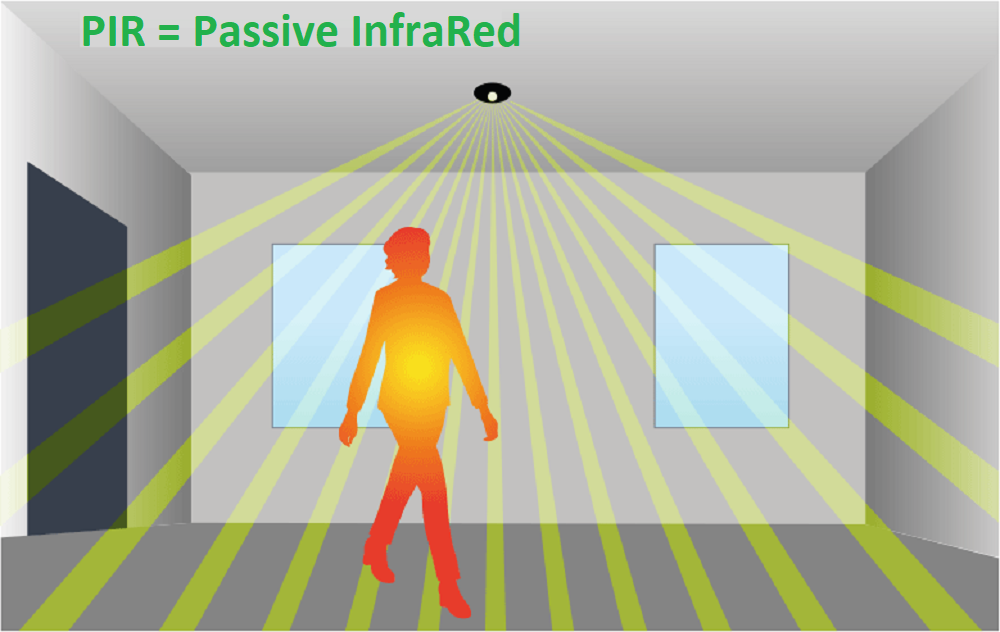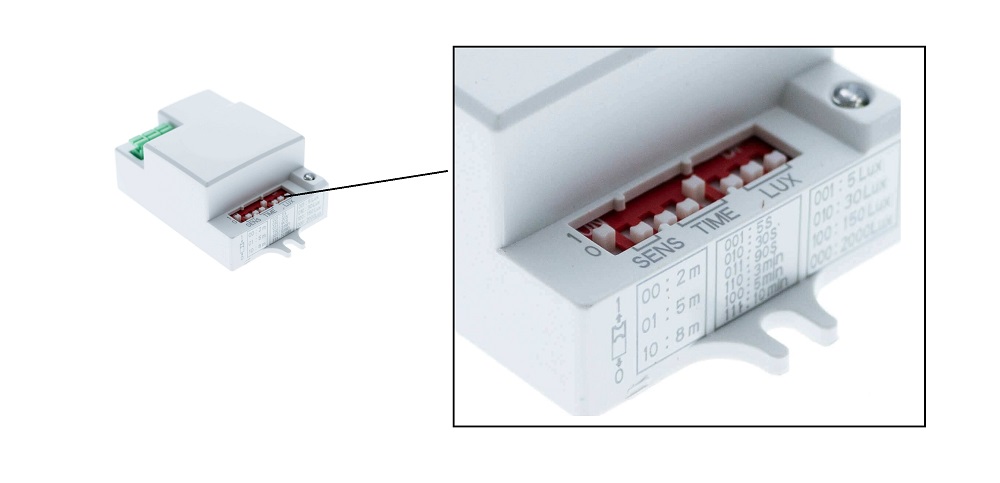Summarize
- PIR sensor detects temperature differences using infrared rays
- The microwave sensor measures the signal to detect echo time movement
- The PIR sensor is sensitive to temperature changes, the microwave does not
- The microwave sensor works more widely, even through walls
- Motion sensors save energy and improve safety
What is the difference between a PIR and a microwave sensor? A motion sensor can use microwave or PIR sensors and here we briefly look at the pros and cons and differences.
What is a motion sensor?
A motion sensor, as the name suggests, is a device that can be used to detect when someone is approaching, causing for example lights to turn on when they are needed. They can be used to reduce energy bills by turning off lights when no one is around, or motion sensors can be used as a security measure, turning on lights and alerting a smart app when someone approaches, for example by flashing a light inside.
What is the difference between a PIR and a microwave sensor?
So there are motion sensors on the market that use microwave and PIR sensors, but what is the difference between PIR and microsensors?
PIR motion sensor
PIR (Passive Infra red) sensors detect warmth They do this by measuring the ambient temperature in a room using a series of infrared beams. When even a single infrared beam detects a temperature difference, the sensor is activated and turns on the lights. When all infrared rays see the same temperature, the lights go out.

Microwave motion sensor
Microsensor, or Microwave. Do not mix with the microwave, as this will not heat the food.
These motion sensors transmit microwave signals and measure the time it takes for the signal to be reflected back to the sensor. The reflection is called an echo.
The echo time is used to calculate the distances to all stationary objects in the detection zone. This allows a baseline to be established against which to compare. A person entering the detection zone causes a disturbance in the microwave signal, which changes the echo time and turns on the lights.

History of motion sensors
Who invented the motion sensor and when did they become widespread? Motion sensor technology has been developed on the basis of radar technology,
PIR History
The basis of the passive infrared sensor (PIR sensor) was invented as early as the 1950s, but its use only became widespread in the 1980s, when Marcel Zueblin patented the first consumer product that used motion to control lighting. PIR sensors are widely used in security systems, lighting and other applications where motion detection is required.

History of the microwave sensor
Microwave sensors were initially used mainly in military and security applications, but later their use has expanded to other applications such as automatic doors, camera systems and motion sensors.
The invention also emerged in the United States, where Samuel Bagno was the developer of the microwave sensor. He invented the first motion sensor in the 1940s, using technology developed during the Second World War. Using his military knowledge of radar, Bagno developed a device that used ultrasonic waves and the Doppler effect to detect movement in a room. He utilized the device in the 1950s by developing the first burglar alarm.

PIR vs. microwave sensor – functional differences
When choosing a motion sensor, you should consider the following:
| PIR | Microwave | |
| Sensitivity | Sensitivity poor in hot weather | Uniform detection at all temperatures. |
| Coverage | 90° | 360° |
| Observation | Not always detected if you walk straight towards it | Works even through a wall |
Since a PIR sensor detects motion based on differences in heat, the ambient temperature can greatly affect its sensitivity. This limitation must be taken into account if you are looking for motion sensors for outdoor lighting. Extreme outdoor temperatures can have a significant impact on the efficiency of equipment. On the other hand, microwave sensors can be problematic in smaller indoor spaces because they are capable of detecting motion through walls. This can cause issues if there is movement on the other side of the wall. However, the problem can be reduced by installing the microwave sensor in an enclosure and aiming it appropriately.
A motion sensor is often much more
Motion sensor + twilight sensor = light only comes on in the dark
Virtually all motion sensors on the market also have a light sensor. In other words, the operation of a motion sensor is also controlled by a photocell, which, thanks to its easily adjustable settings, can be configured to react to different lighting levels according to the desired use. The light sensor is designed so that you can adjust the screw so that the motion detection is always on even when it’s light out or only when it’s dim or dark.
Sensitivity adjustment in microwave sensors
Microwave sensors also typically include a sensitivity adjustment that can be used to reduce detection through walls. The adjustment may be a DIP switch or a stepless control.

Led lighting expert
LedStore has been a specialist in Led lighting since 2010. We have our own product design, so our products are technologically state-of-the-art. Our focus is on light colour temperature control and high colour rendering index lights. We carry out hundreds of lighting designs each year for our customers’ projects. We offer a service of custom-made led strips, i.e. made-to-order, easy to install led strips in profiles for everyone. Also installed. Remember that we are always ready to offer our help to you along the way, by email (myynti@ledstore.fi) and by phone (045 251 4510). As always, feel free to share photos of your own projects on social media, on IG and FB. We love to see the cool things our LEDs do, and it helps to provide inspiration for those who are not sure about the power and awesomeness of LEDs. Did you know that we already have over 3 500 pictures of our LED installations in our Gallery!


